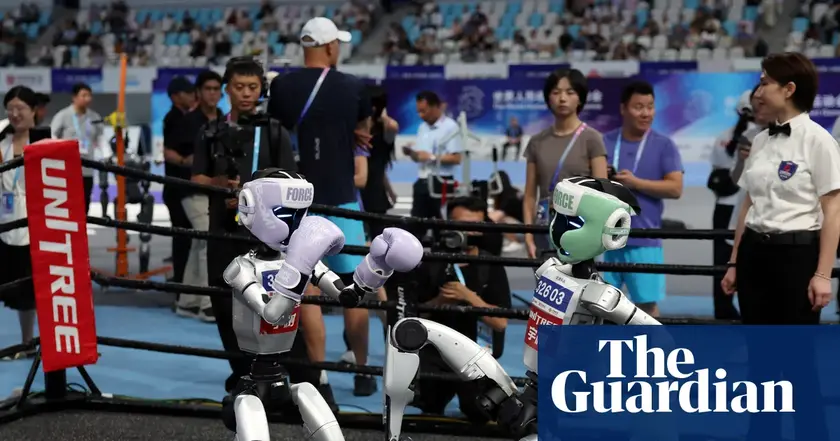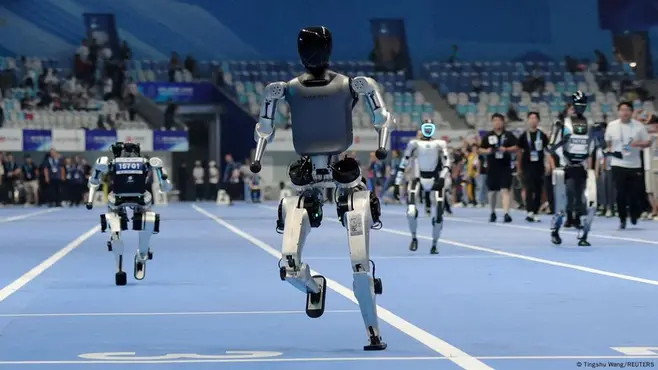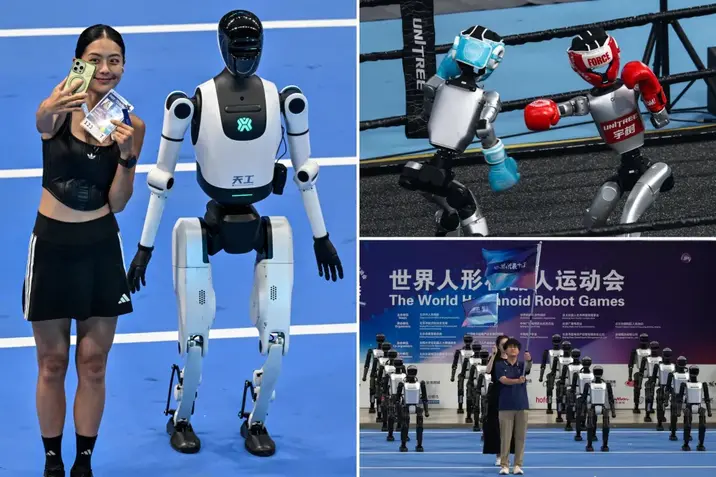T4K3.news
Humanoid robots highlight China tech push
Beijing showcases the World Humanoid Robot Games while questioning practical use and real-world deployment.

Beijing uses a major robotics showcase to highlight progress while critics question practical value outside staged events.
China showcases humanoid robots while real world limits loom
On the opening day of the World Humanoid Robot Games in Beijing, teams from top universities enter humanoid robots in events that range from kickboxing to athletics, football and dance. A standout moment came when a robot’s head detached during a long race, underscoring ongoing fragility even as spectators cheered. The event is held at the National Speed Skating Oval, a venue tied to China’s ambition to push embodied AI into public view.
Beyond spectacle, the games are part of a broader push to turn robotics into a practical pillar of industry and society. Cities have established robotics funds, and state-backed plans promise vast financial support for the AI sector over the next five years. Analysts note that the display feeds a global competition with the United States, shaping investment and policy choices as China aims to translate hype into real products and jobs. Still, experts warn that real-world use cases lag behind the impressive demonstrations, especially in safety, data needs, and dexterity.
Key Takeaways
"I came here out of curiosity"
Spectator Hong Yun on the event atmosphere
"Keeping the head balanced while in movement is the biggest challenge for us"
Wang Ziyi on robot design difficulties
"The home is probably one of the last places you’ll ever find a humanoid robot because of safety"
Chan on safety limits for everyday use
"If there is an area where Beijing thinks that China is ahead, or could be positioned as a world leader, then they really want to draw attention to that area"
Kyle Chan on policy goals
The event reads as a deliberate signal from Beijing: the country intends to lead in embodied AI and the industrial ecosystems that support it. It also exposes a tension between national prestige and practical deployment. The spectacle can attract talent, partners and funding, but it risks inflating expectations if the public conflates showmanship with everyday usefulness. Policymakers must balance hype with patient testing and safety standards to keep momentum sustainable. Globally, the episode highlights how tech rivalry shapes funding, supply chains and strategic priorities, not just science.
Highlights
- When a head pops off mid race you see the gap between hype and craft
- Beijing bets big on embodied AI to reshape its workforce
- Public curiosity meets a sober gap between dreams and daily life
- Investments flood in while real tasks remain stubbornly hard
Budget and political sensitivity surround humanoid push
China’s push to lead in embodied AI comes with heavy government funding and scrutiny. The investments raise questions about cost, effectiveness, and public reaction as the country seeks to translate display success into real-world utility amid geopolitical tensions.
Progress will depend on patient testing, safe deployment and real world proof rather than headlines.
Enjoyed this? Let your friends know!
Related News

Humanoid robot games open in Beijing

Tech stocks long term bets under review

Tariffs and Chips Plan Threaten Auto Makers

U.S. Manufacturing Gains Momentum at Reindustrialize Summit

Trump announces $90 billion investment in Pennsylvania AI hub

Tesla signs major AI chip deal with Samsung

Trump reveals AI Action Plan shaped by tech leaders

Beijing opens World Humanoid Robot Games
